Reproductive rights-

For Women –
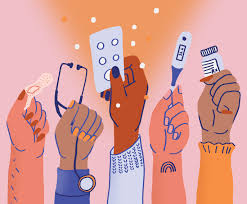

Reproductive rights, also known as Generative rights, refer to the freedom to make decisions regarding one’s reproductive health and body autonomy.
These rights are essential for preserving equality, respect, and autonomy for all people, regardless of gender, sexual orientation, or socioeconomic background.
This include, but are not limited to, the following aspects:
1. Access to Contraception:
Individuals with access to a variety of contraception techniques can plan and spacing pregnancies based on their choices and circumstances.
This involves obtaining birth control tablets, condoms, intrauterine devices (IUDs), implants, and emergency contraception.
2. Access to Safe and Legal Abortion:
Generative rights advocates for individuals’ access to safe and legal abortion services.
This includes making abortion available without unreasonable limitations, such as waiting periods, obligatory counseling, or needless medical procedures.
Access to abortion is critical for protecting the health, autonomy, and dignity of those who choose to end their pregnancy.
3. Comprehensive Sex Education:
Comprehensive sex education programs educate people on reproductive health, contraception, sexually transmitted infections (STIs), consent, and healthy relationships.
This education teaches people how to make educated decisions about their sexual and reproductive health, lowering the risk of unwanted pregnancies and STIs.
4. Maternal Health Care:
Access to quality maternal health care services, such as prenatal, delivery, and postnatal care, is one of the reproductive rights.
Access to maternal health care is critical for ensuring healthy pregnancies and births, lowering maternal death and morbidity rates, and closing maternal health inequities.
5. Prevention and Treatment of STIs:
Reproductive rights include initiatives to prevent and cure sexually transmitted infections (STIs) via education, screening, testing, and treatment.
Access to STI prevention and treatment programs is critical for improving sexual health and preventing the spread of STIs in communities.
6. Fertility Treatment and Assisted Reproductive Technologies:
Individuals’ reproductive rights include the capacity to receive fertility treatment and assisted reproductive technologies (ART), such as IVF, surrogacy, and sperm or egg donation.
These technologies help individuals and couples overcome infertility and achieve their reproductive objectives.
7. Protection from Coercion and Discrimination:
Reproductive rights include protection from coercion, discrimination, and violence connected to reproductive decisions.
This involves combating coercive practices like forced sterilization, abortion, and child marriage, as well as discrimination based on color, ethnicity, handicap, or financial background.
8. Reproductive Justice:
Reproductive justice broadens the scope of reproductive rights by addressing overlapping concerns of race, class, gender, sexuality, and other kinds of oppression.
It highlights everyone’s right to have or not have children, as well as to raise them in safe and supportive circumstances.
Reproductive justice promotes policies and efforts that address systemic inequities and guarantee that disadvantaged populations have equitable access to reproductive health care and resources.
Overall, reproductive rights are critical for ensuring individuals’ autonomy, dignity, and well-being regarding their sexual and reproductive health.
Protecting and expanding these rights necessitates continual activism, legislative reform, and societal change to guarantee that all people can make informed decisions about their bodies and futures.
Reproductive rights are not limited to any specific gender-

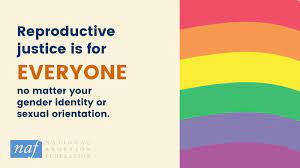
These rights apply to all persons, regardless of gender identity or expression, and include the ability to make decisions regarding their reproductive health and body autonomy.
While reproductive rights have traditionally been presented in terms of women’s rights, it is critical to acknowledge that people of all genders may benefit from and campaign for these rights.
Here’s how reproductive rights apply to different genders-
1. Women:
Given the historical and current fights for autonomy over their bodies, reproductive rights have long been linked to women’s rights, such as access to contraception, safe and legal abortion, and maternal health care. Women’s reproductive rights include the freedom to choose whether or not to have children, access to comprehensive reproductive health care services, and protection against coercion and discrimination in reproduction.
2. Men:
Men have reproductive rights as well, including the ability to access contraception and family planning services, make reproductive health and family planning decisions, and receive fatherly support.
Men’s reproductive rights include access to information and services for avoiding unplanned pregnancies, as well as the option to participate in parenting and caregiving duties.
3. Transgender and Nonbinary Individuals:
Transgender and nonbinary people may experience specific obstacles in reproductive health care, such as access to gender-affirming treatment and fertility preservation alternatives.
These people’s reproductive rights include the right to inclusive and affirming reproductive health care services, respect for their chosen gender identity and expression in reproductive decision-making, and protection from gender-based discrimination.
4. Intersex Individuals:
It are born with variations in sex characteristics that do not fit typical binary notions of male or female.
It may face medical interventions and stigma related to their bodies that impact their reproductive autonomy and rights.
Reproductive rights for intersex individuals include the right to autonomy over their bodies, access to accurate information and support regarding their bodies and reproductive options, and protection from non-consensual medical interventions.
5. Gender-Nonconforming and Genderqueer Individuals:
Gender-nonconforming and genderqueer individuals may face barriers to accessing reproductive health care services due to discrimination or lack of awareness about their specific needs.
Reproductive rights for gender-nonconforming and genderqueer individuals include the right to access affirming and inclusive reproductive health care services, respect for their chosen gender identity and expression in reproductive decision-making, and protection from discrimination based on gender identity or expression.
In summary, reproductive rights are universal and apply to individuals of all genders.
Recognizing and respecting the diverse reproductive health needs and experiences of people across the gender spectrum is essential for promoting equality, autonomy, and dignity in matters related to reproductive health and decision-making.
Advocating for reproductive rights for all genders requires addressing systemic barriers, stigma, and discrimination to ensure that everyone can exercise their reproductive rights freely and without judgment or coercion.
Some Books Related to Reproductive Rights-
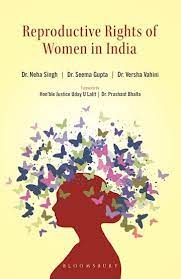

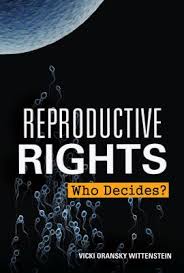
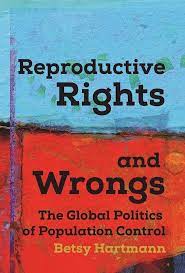
Reproductive rights for all gender and sexualities –

Reproductive rights are basic human rights that extend to people of all genders and sexual orientations. Ensuring reproductive rights for all genders and sexualities entails recognizing and addressing the unique reproductive health needs and experiences of persons with different gender identities and sexual orientation. Here’s how reproductive rights relate to different gender identities and sexualities:
1. Lesbian, Gay, Bisexual, and Queer (LGBTQ+) Individuals:
LGBTQ+ individuals may face unique challenges related to generative health care, including access to inclusive and affirming services, discrimination, and legal barriers to family formation.
generative rights for LGBTQ+ individuals include access to fertility treatment and assisted generative technologies (ART), such as donor insemination, in vitro fertilization (IVF), and surrogacy.
– LGBTQ+ individuals also have the right to build families through adoption and foster care, as well as access to parenting support and resources.
– Discrimination based on sexual orientation or gender identity can impact LGBTQ+ individuals’ ability to access reproductive health care services, including contraception, STI testing and treatment, and prenatal care.
2. Transgender and Gender-Nonconforming Individuals:
Transgender and gender-nonconforming individuals may face barriers to accessing reproductive health care services, including hormone therapy, gender-affirming surgeries, and fertility preservation options.
– Reproductive rights for transgender and gender-nonconforming individuals include the right to access gender-affirming care, respect for their chosen gender identity in reproductive decision-making, and protection from discrimination in health care settings.
– Transgender individuals may also have specific reproductive health care needs related to hormone therapy and surgical transition procedures, as well as considerations for fertility preservation before starting medical transition.
3. Intersex Individuals:
Intersex individuals are born with variations in sex characteristics that do not fit typical binary notions of male or female.
Individuals may face non-consensual medical interventions and stigma related to their bodies that impact their reproductive autonomy and rights.
– Reproductive rights for intersex individuals include autonomy over their bodies, access to accurate information and support regarding their bodies and reproductive options, and protection from non-consensual medical interventions.
It individuals may also have specific health care needs related to hormone therapy, reproductive organ function, and fertility preservation.
4. Asexual and Aromantic Individuals:
Asexual and aromantic individuals may have unique perspectives on reproductive rights and decision-making, given their orientation towards romantic and sexual relationships.
– Reproductive rights for asexual and aromantic individuals include the right to autonomy over their bodies, access to comprehensive sexual health education, and support for their reproductive choices, whether they involve parenthood, non-biological forms of family building, or opting out of reproductive processes altogether.
To summarize, generative rights for all genders and sexualities entail acknowledging and respecting the unique health needs, experiences, and preferences of individuals across gender identity and sexual orientation.
Reproductive rights must be upheld by removing institutional hurdles, stigma, and discrimination so that everyone, regardless of gender identity or sexual orientation, may make informed decisions about their reproductive health and body autonomy.
Reproductive rights – Laws , Policies and regulations In India –
In India, reproductive rights are governed by a combination of laws, policies, and regulations at both the national and state levels.
These laws and regulations address various aspects of reproductive health and rights, including access to contraception, maternal health care, abortion services, and prevention of gender-based violence.
Here are some key laws and regulations related to reproductive rights in India:
1. Medical Termination of Pregnancy (MTP) Act, 1971:
The MTP Act governs abortion services in India.
It permits the termination of pregnancy under certain conditions, such as when the pregnancy poses a risk to the physical or mental health of the woman, in cases of fetal abnormalities, or when the pregnancy is a result of rape or incest.
The Act sets out the circumstances under which abortion can be performed, the qualifications of providers, and the gestational limits within which abortion is allowed.
2. Contraceptive Prevalence Rate (CPR) Program:
The Government of India implements various family planning programs to promote contraceptive use and reduce unintended pregnancies.
These programs provide access to a range of contraceptive methods, including condoms, birth control pills, intrauterine devices (IUDs), and sterilization services.
3. Reproductive and Child Health (RCH) Program:
The RCH program aims to improve maternal and child health outcomes by providing a range of reproductive health services, including antenatal care, skilled attendance at birth, postnatal care, and family planning services.
The program focuses on reaching underserved populations and improving access to essential health services.
4. Pre-Conception and Pre-Natal Diagnostic Techniques (PCPNDT) Act, 1994:
The PCPNDT Act prohibits sex-selective abortions and regulates the use of pre-natal diagnostic techniques to prevent the misuse of such techniques for sex determination.
The Act aims to address the issue of gender-based discrimination and promote the value of the girl child.
5. Protection of Women from Domestic Violence Act, 2005:
This Act provides legal protection to women who are victims of domestic violence, including physical, emotional, sexual, or economic abuse.
It includes provisions for obtaining protection orders, residence orders, and monetary relief, as well as access to medical and counseling services for survivors of domestic violence.
6. Maternity Benefit Act, 1961:
The Maternity Benefit Act regulates maternity leave and benefits for women working in certain establishments.
It provides for a minimum of 26 weeks of paid maternity leave for women working in the organized sector, as well as provisions for medical benefits and breastfeeding breaks.
7. National Health Mission (NHM):
The NHM is the Government of India’s main health initiative focused at increasing access to excellent health care services, particularly reproductive health services, in both rural and urban regions.
It supports various initiatives such as maternal and child health programs, family planning services, and adolescent health programs.
These laws and regulations, together with numerous government efforts and programs, play an important role in supporting generative rights and enhancing access to reproductive health care services for women and couples throughout India.
However, problems including as restricted access to services, stigma associated with reproductive health issues, and persisting gender inequities continue to impede the country’s implementation of reproductive rights.
Ongoing efforts are required to resolve these issues and guarantee that all persons may use their generative rights freely and without prejudice.
WHAT IS REPRODUCTIVE HEALTH ? CLICK HERE – https://womaniyas.com/2024/02/02/reproductive-health-in-women-encompasses-a-wide-range-of-physical-emotional-and-social-well-being-related-to-the-reproductive-system/
